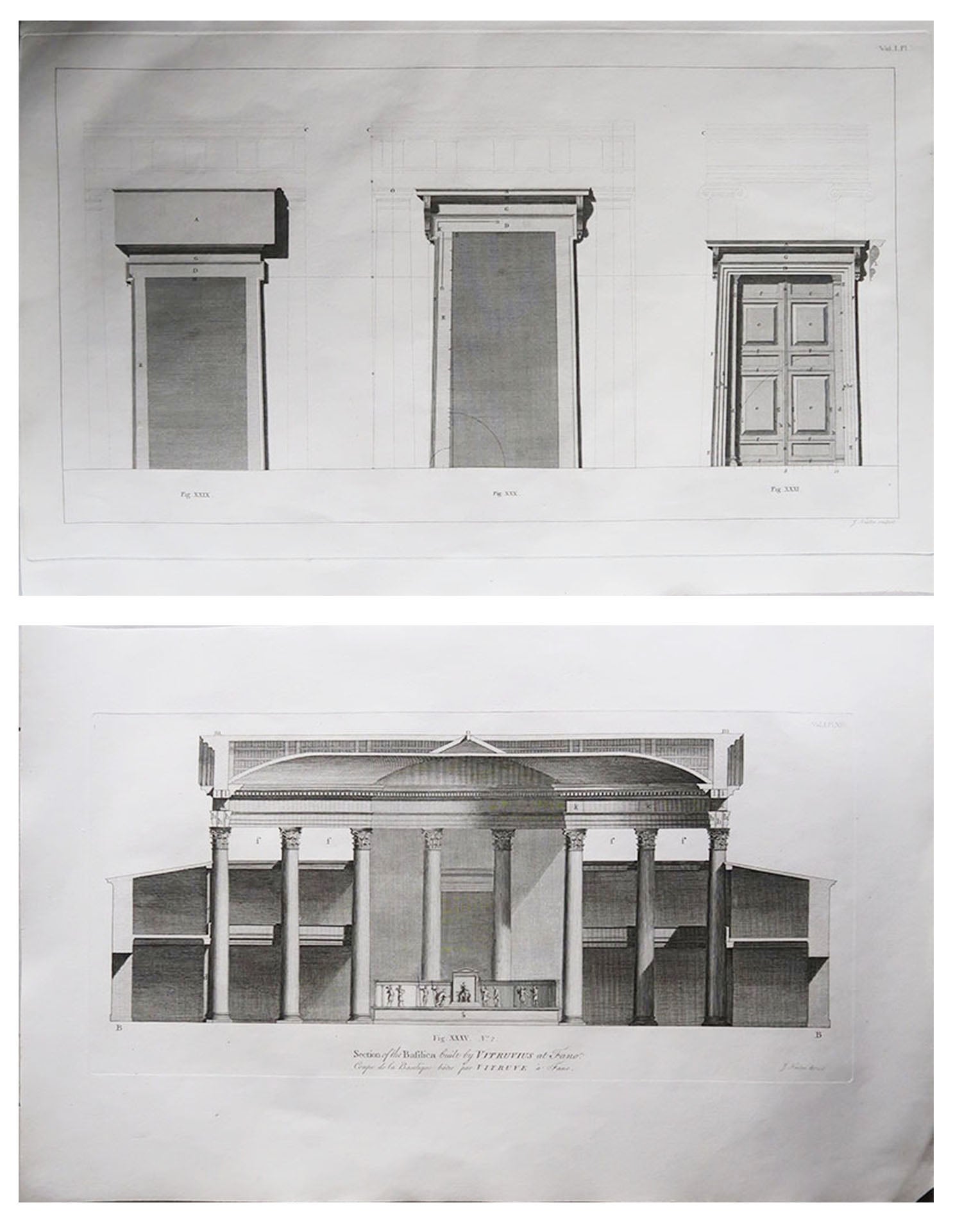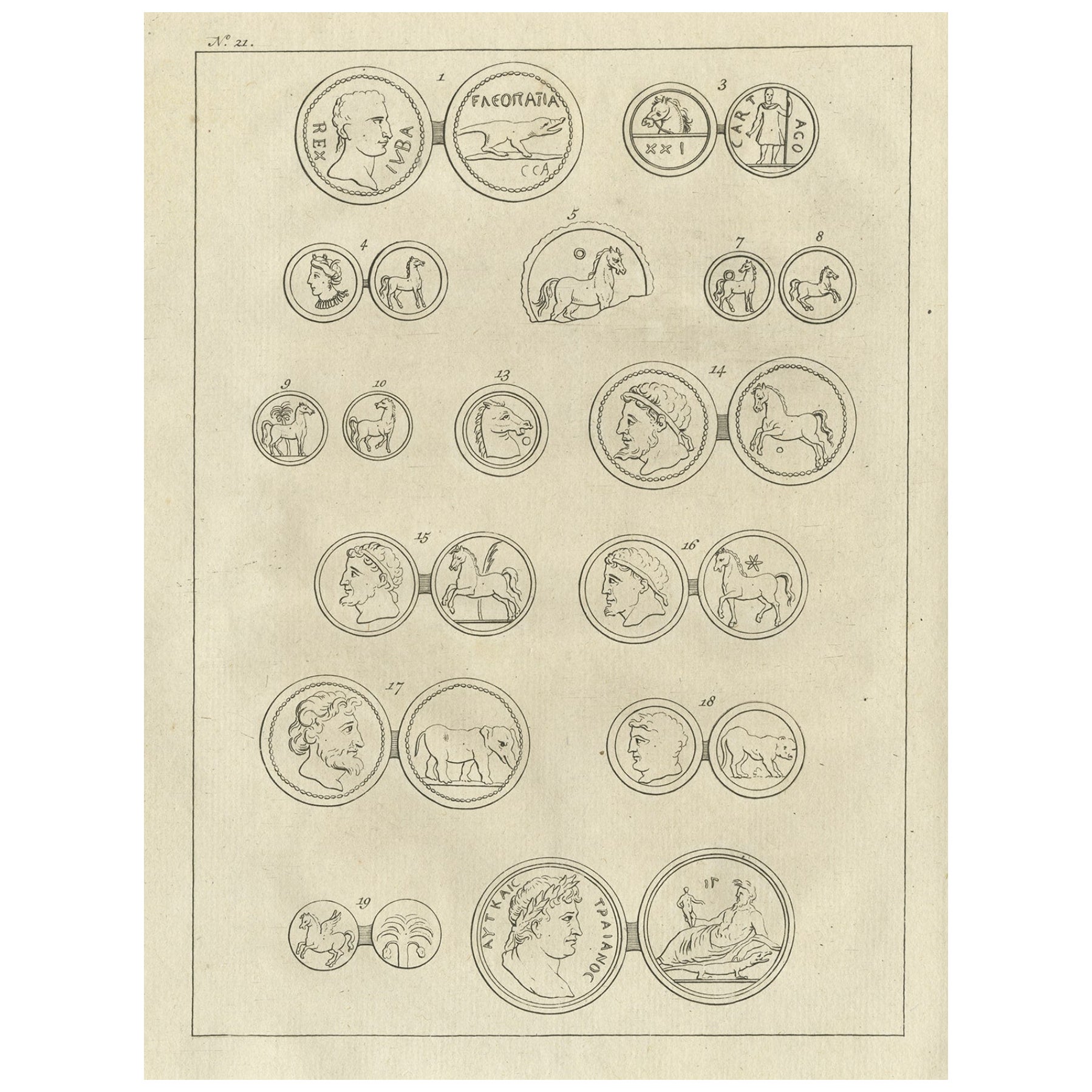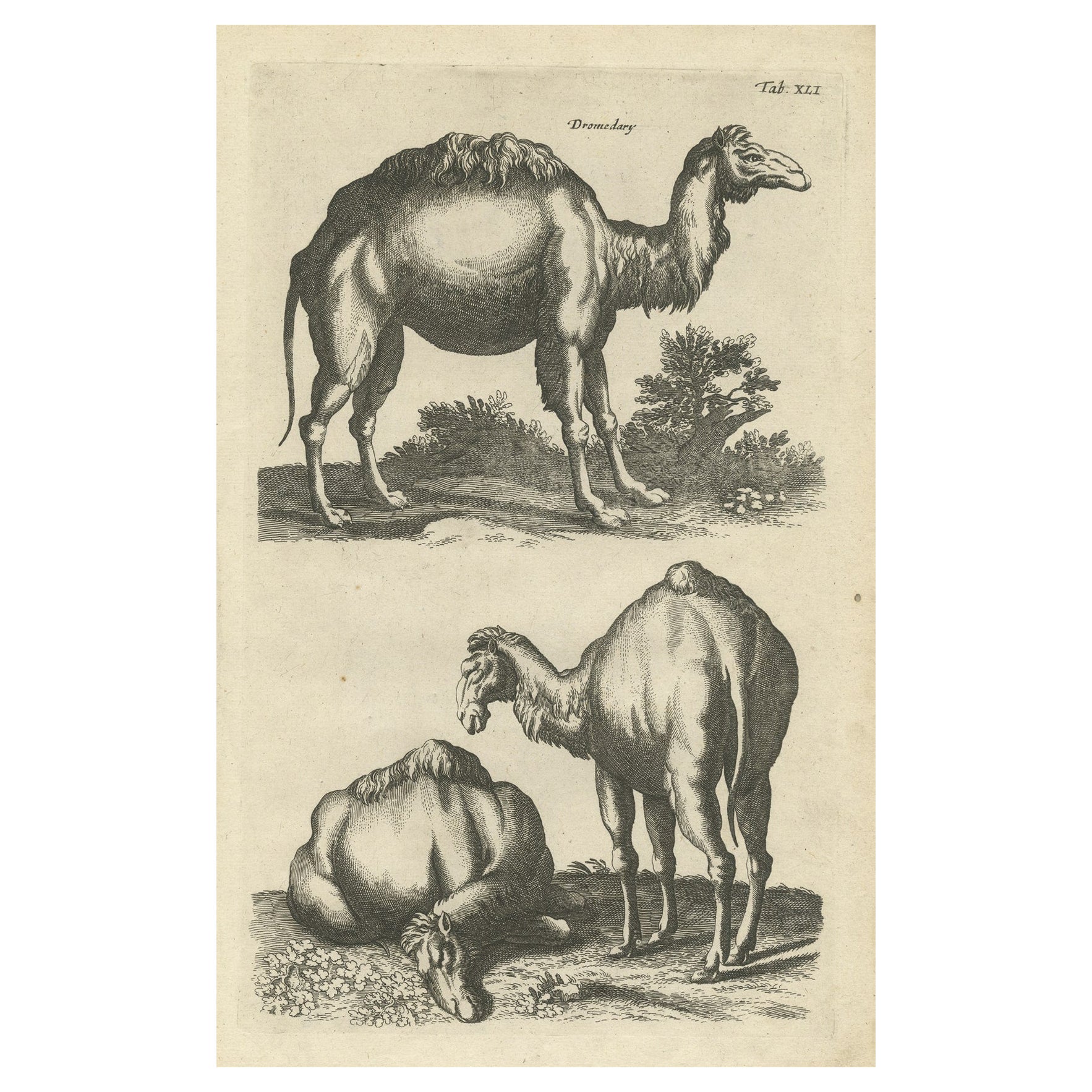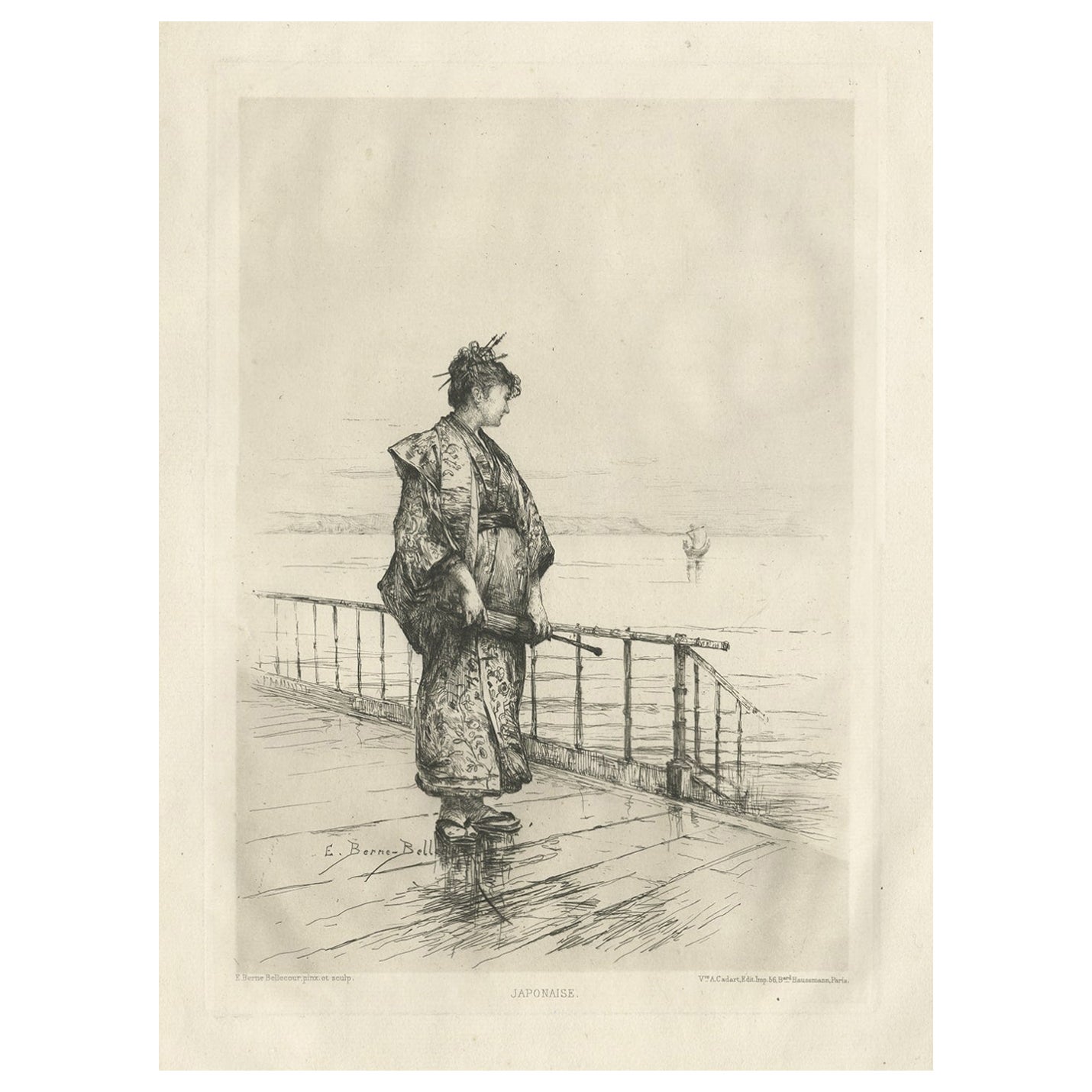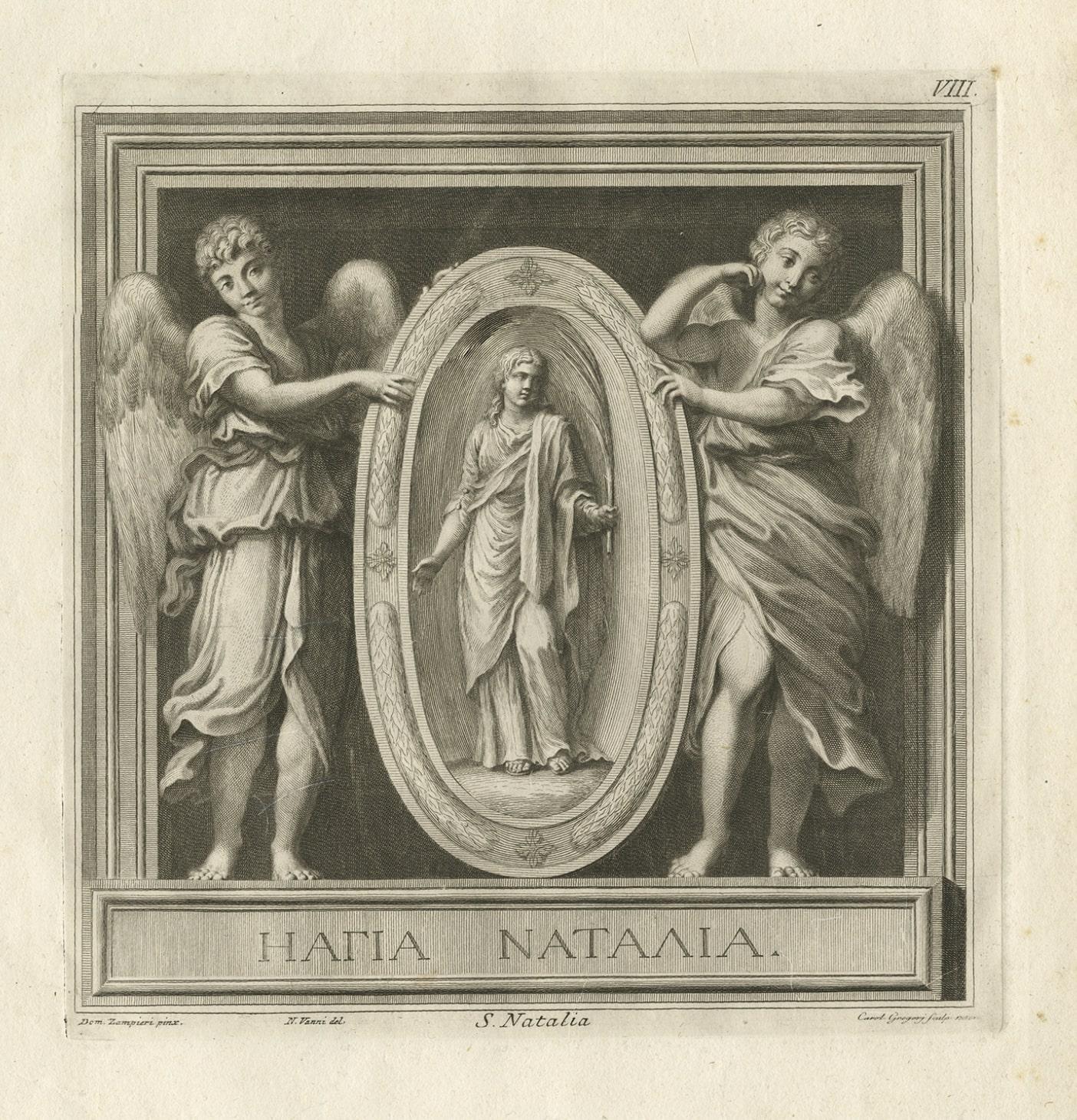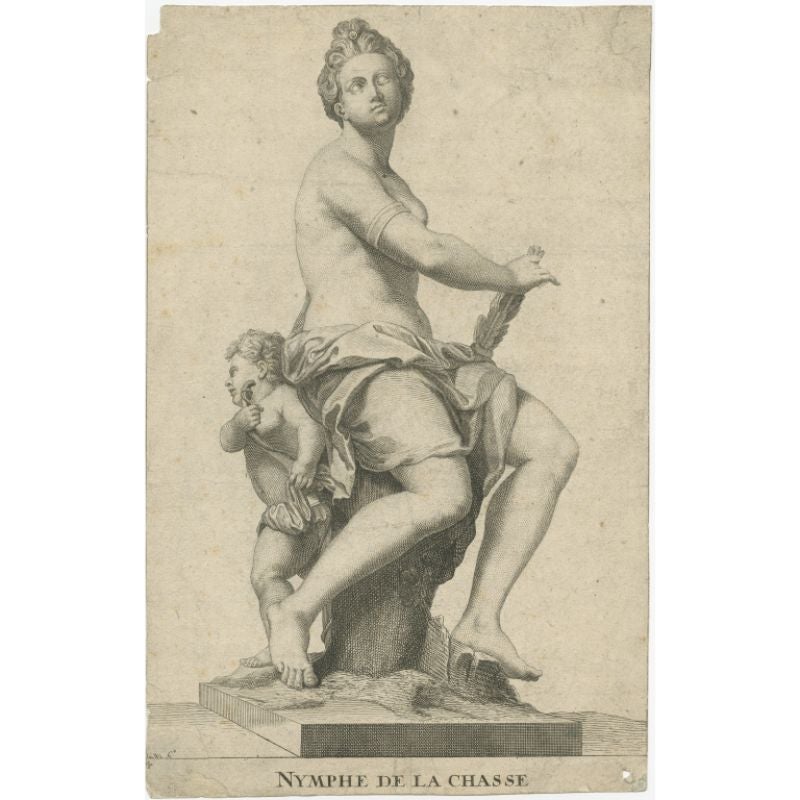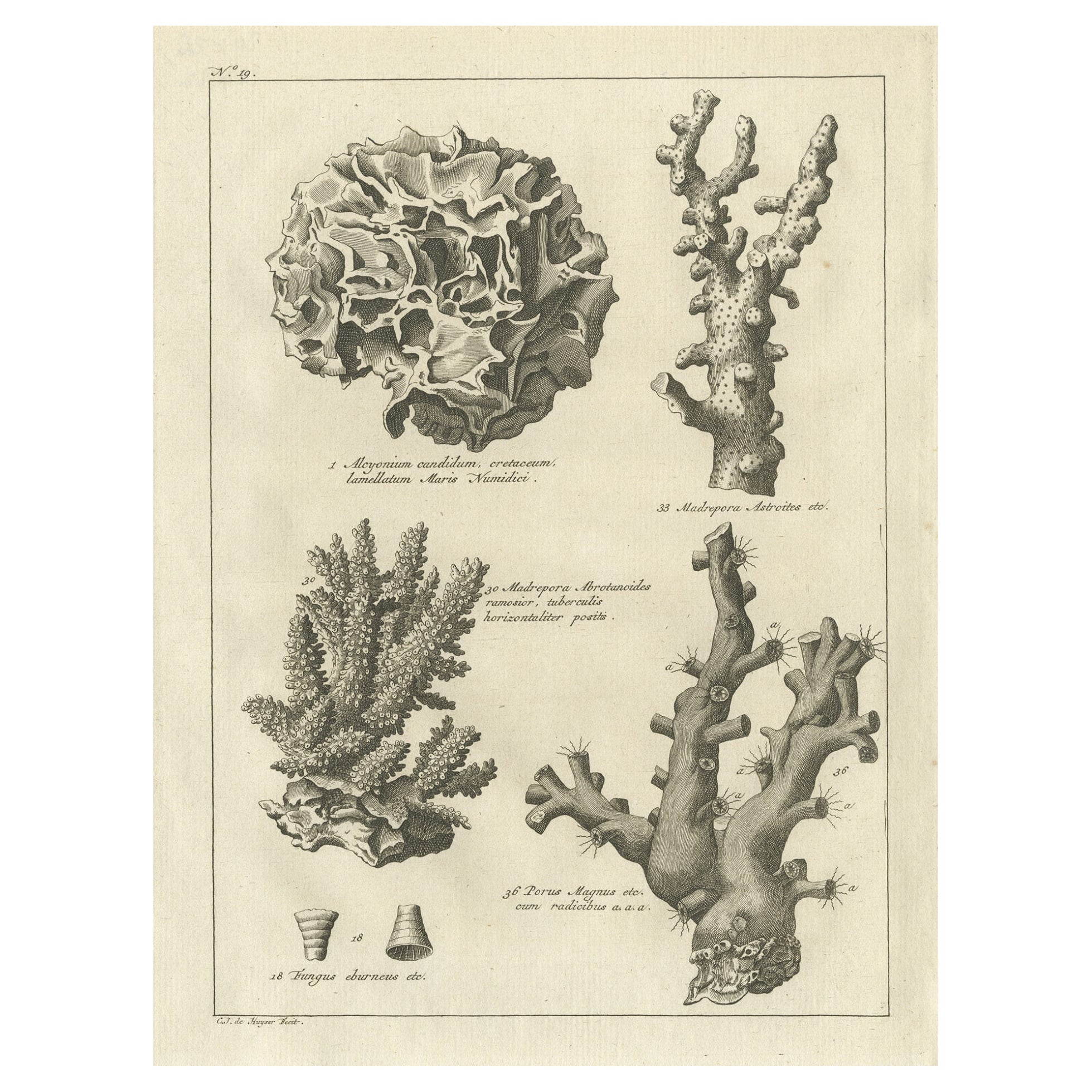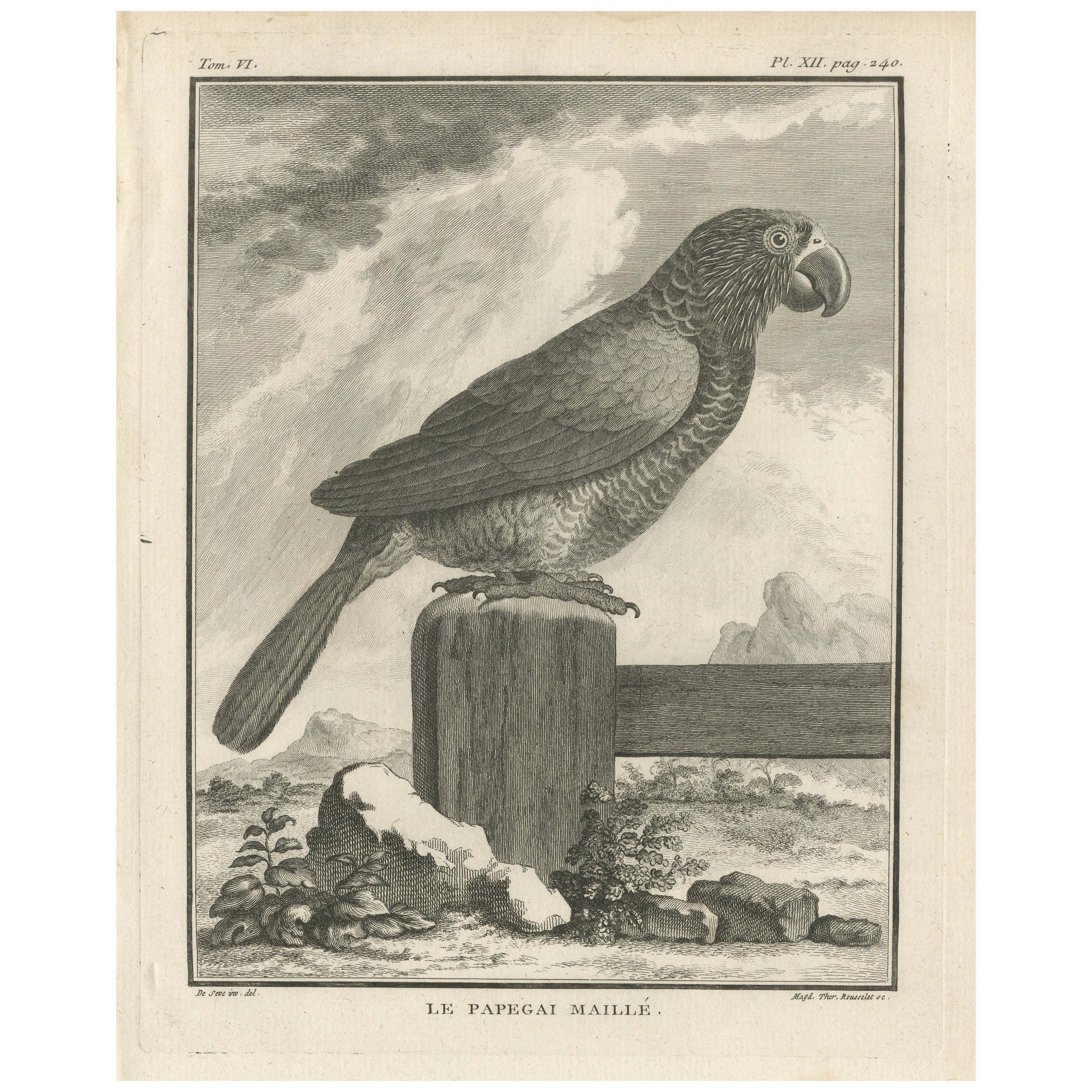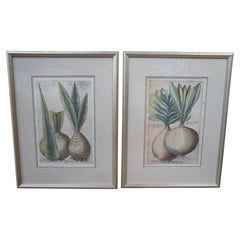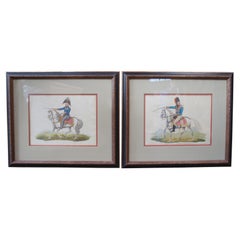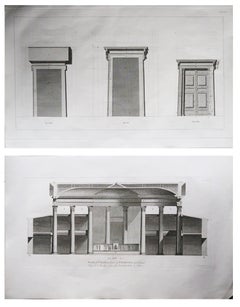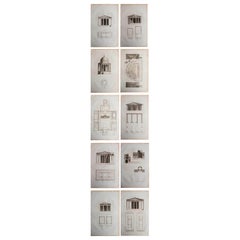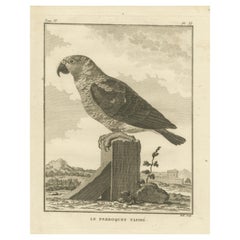
2 Antique Architectural Maison Poete Tragique Pompei Engraving Rouchette Bouchet
View Similar Items
Want more images or videos?
Request additional images or videos from the seller
1 of 13
2 Antique Architectural Maison Poete Tragique Pompei Engraving Rouchette Bouchet
About the Item
- Dimensions:Height: 16 in (40.64 cm)Width: 0.125 in (3.18 mm)Depth: 20 in (50.8 cm)
- Sold As:Set of 2
- Style:Classical Roman (In the Style Of)
- Materials and Techniques:
- Period:
- Date of Manufacture:19th Century
- Condition:Wear consistent with age and use. Good Overall - Light discoloration; a few marks; see pictures.
- Seller Location:Dayton, OH
- Reference Number:Seller: 299651stDibs: LU5343223753362
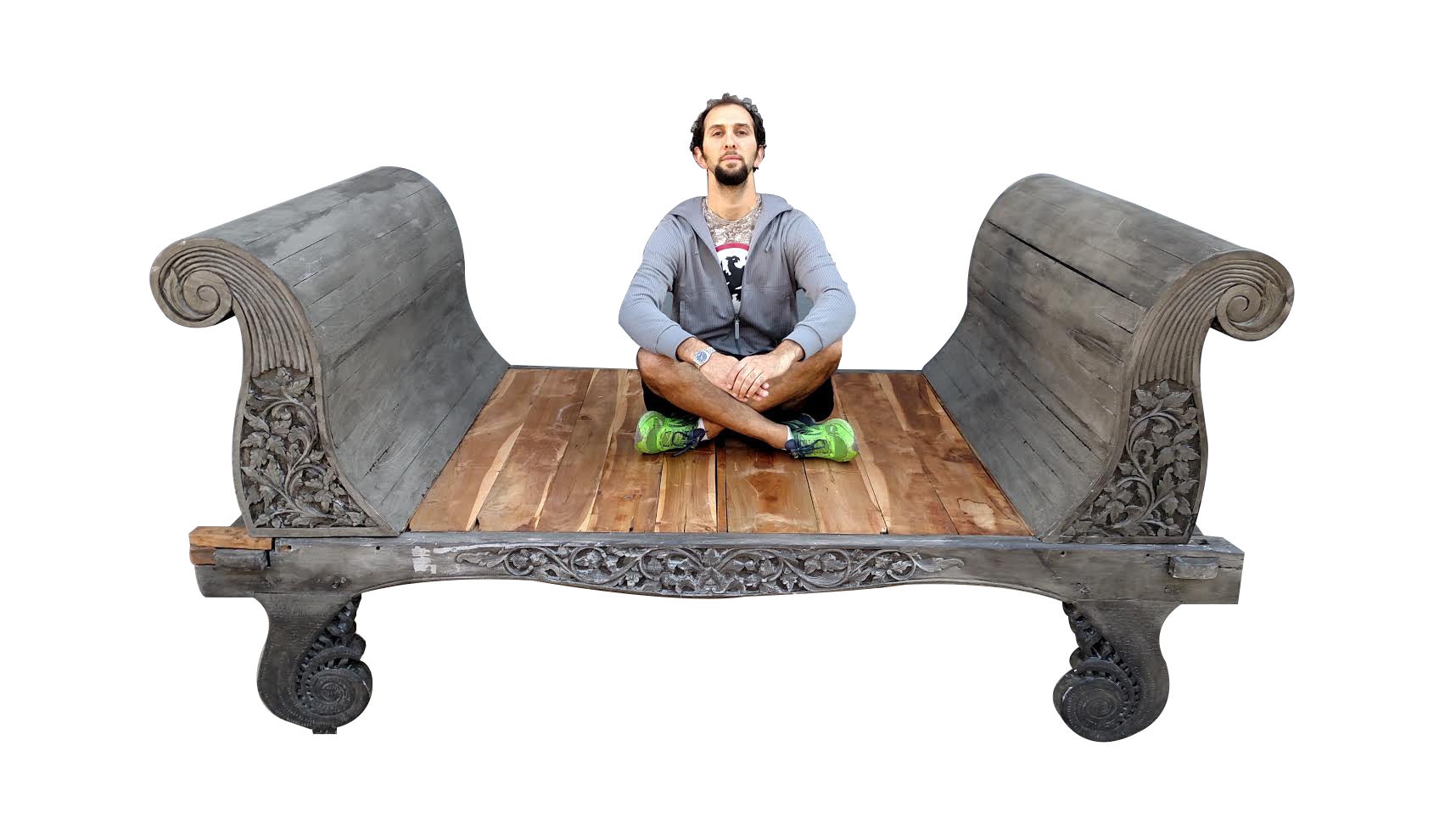
About the Seller
4.9
Platinum Seller
These expertly vetted sellers are 1stDibs' most experienced sellers and are rated highest by our customers.
Established in 2010
1stDibs seller since 2020
1,118 sales on 1stDibs
More From This SellerView All
- Antique Thomas Gainsborough Engraving Mrs Richard Brinsley Sheridan LondonLocated in Dayton, OHAntique colored Mezzotint engraving portrait of Mrs. Richard Brinsley Sheridan by Thomas Gainsborough, published in 1909 by W.M. Power of London. A penciled note and signature in the...Category
Early 20th Century British Expressionist Prints
MaterialsWood, Paint, Paper
- 2 Antique Framed Emanuel Sweert Florigriums Botanical Latin Plant EngravingsBy Emanuel SweertLocated in Dayton, OHPair of antique Emanuel Sweert Florilegium floral botany plant bulb engravings. Plates 32 and 67. 32. Pancralim orientals, pancratium occidentalis. 67. Narc. Promont. bona fpei...Category
Early 20th Century Prints
MaterialsPaper
- 2 Antique 1815 Richard Evans Napoleonic War Horse Officer EngravingsLocated in Dayton, OHTwo antique Richard Evans hand colored equestrian officer engravings featuring Lieut General Henry William Paget and Field Marshal Von Blucher. Both dres...Category
Antique 1810s Regency Prints
MaterialsPaper
- Antique 1755 Copperplate Engraving Westminster Bridge Lambeth Survey of LondonLocated in Dayton, OHAntique hand colored riverscape / landscape copperplate engraving based on a painting by Jacob Maurer and engraved by Paul Fourdrinier - A View of Westminster Bridge from Lambeth, published according to Act of Parliament 1754 for Stowe’s Survey of London. BIO: Paul Fourdrinier sometimes referred to as Peter or Pierre Fourdrinier, was an 18th Century engraver in England. Paul Fourdrinier, engraver and printseller, was born on 20 December 1698 in Groningen in the Netherlands, the son of Jacques Fourdrinier and his wife, Jeanne Theroude, Huguenot refugees from Dieppe, Normandy. He was a pupil of Bernard Picart at Amsterdam for six years, and came to England in 1720. He was employed in engraving portraits and book illustrations. He also engraved two works by Peter Monamy, marine paintings displayed in Vauxhall Gardens. The engravings were published in 1743, but may have been executed earlier. Starting in 1742 Fourdrinier produced a series of books consisting of numerous folding charts showing "The Succession of Colonels to all his Majesties Land Forces from their Rise to 1742", as well as many other details of British military and naval personnel. The 2004 edition of the Oxford Dictionary of National Biography makes it clear that in the 19th century edition of the Dictionary of National Biography this engraver's works and career were assigned to two individuals, Peter (or Pierre) and Paul Fourdrinier. Peter/Pierre is now seen to be a fictitious individual resulting from an accidental misnaming of Paul. Paul Fourdrinier is mentioned as the engraver of some of the works listed above, and he has been identified with the Paul Fourdrinier who was of the parish of St. Martin's-in-the-Fields, married to Susanna Grolleau, and who died in January or February 1758. The couple had at least five children, including a son Henry Fourdrinier, whose daughter, or granddaughter, Jemima Fourdrinier was the mother of Cardinal John Henry Newman...Category
Antique Mid-18th Century British Colonial Prints
MaterialsPaper
- Antique Architectural Press Cathedral Cityscape Etching After Frank BrangwynBy Frank BrangwynLocated in Dayton, OH"Antique cityscape print “From an Etching by Frank Brangwyn, R.A. A.D. 1922 by The architectural Press. “Frank Brangwyn was born in 1867 in Bruges, Belgium. His family moved back to London in 1875 where he attended school until 1879, when he left as much out of boredom as necessity. His father worked as an architect, muralist, and in other arts-related crafts. Frank helped around the studio and continued his own artistic education by copying drawings at what was to become the Victoria and Albert Museum. His abilities attracted the notice of more established artists and at the age of 15 he was working for William Morris getting rudimentary training and preparing designs for many aspects of Morris' Arts and Crafts output. In 1885, with nothing much more than youthful enthusiasm, he submitted a painting to the Royal Academy Summer Exhibition and was accepted - at the age of 17. Spurred by this success he rented a studio and began a period of productive poverty. With little money, his early work revolved around the sea where traditional subjects for British art were moored and made docile models. This is considered his """"""""grey"""""""" period and the limited palette may be due as much to limited funds as to artistic intent. His 1890 canvas, """"""""Funeral At Sea"""""""" is typical of this period and won a Gold Medal at the 1891 Paris Salon. The young artist was making waves. In 1888, he worked on a freighter for passage to the Near East of Istanbul and the Black Sea. Orientalism was a major force in European art at the time and Brangwyn was as seduced as many artists were with the colors and light of the Mediterranean and African coasts. These trips brought a new palette to his work and something new to British art. The Buccaneers, at right, is from 1892 and the difference between it and his """"""""grey"""""""" period is dramatic. Just as we have movie critics today, art critics proliferated during the 19th century. Walter Shaw Sparrow, in his excellent """"""""Frank Brangwyn and His Work"""""""", devotes several chapters to the reaction of these critics to Brangwyn's art. Opinions were as varied as the two styles shown here, but what is most interesting is the degree of attention being paid to the work of a self-taught 25-year old. Whatever their views of his work, he was not being taken lightly. Not surprisingly, the bright hues and intense light of his new style were not appreciated by the establishment. To put his work in historic perspective, this was a period of Impressionism, Art Nouveau, and the Munich and Vienna Secessions. In British art, Sargent, Whistler, Waterhouse and Draper were popular. Lord Leighton, Burne-Jones and Alma-Tadema were still active. Brangwyn was following none of these men and the critics were at a loss as to how to pigeonhole him. The continental critics in France, Munich and Vienna had no such trouble. He was seen as a most modern and successful artist from the beginning. For his part, Brangwyn followed his own muse and in doing so found himself at the vanguard of the art world. In 1892 he began working as the designer for the new art magazine, """"""""The Graphic"""""""". In 1895 he was asked to paint murals for the notorious gallery, L'Art Nouveau, in Paris. He won medals for his work in Munich and Paris. At the age of 30, while Britain puzzled over how to evaluate his work, the rest of the world viewed him as the definition of modern British art. He illustrated books: """"""""Don Quixote...Category
Vintage 1920s Prints
MaterialsPaper
- 2 Antique Rome Italy Color Engravings St Andrea Church Piazza Turtle FountainLocated in Dayton, OHSet of two antique colored engravings featuring some of the Splendors of Rome – One city street featuring the Church of Saint Andrea and one...Category
Antique 19th Century Neoclassical Prints
MaterialsPaper
You May Also Like
- Pair of Large Scale Original Antique Architectural Prints, Circa 1790Located in St Annes, LancashireWonderful pair of architectural prints. Copper-plate engravings by J.Newton after designs by Vetruvius Published C.1790 Unframed and not matted.Category
Antique 1790s English Classical Roman Prints
MaterialsPaper
- Set of 10 Large Scale Original Antique Classical Architectural Prints, C. 1790Located in St Annes, LancashireWonderful set of 10 architectural prints. Copper-plate engravings by J.Newton after designs by Vetruvius Published C.1790 Unframed and not matted.Category
Antique 1790s English Classical Roman Prints
MaterialsPaper
- Original Antique Engraving of a Parrot SpeciesLocated in Langweer, NLAntique bird print titled 'Le Perroquet Tapiré'. Original engraved print of a parrot species. This print originates from 'l'Histoire naturelle des oiseaux' by Buffon. Buffon was the ...Category
Antique Late 18th Century Prints
MaterialsPaper
$228 Sale Price20% Off - Antique Engraving of Ancient Coins, 1773Located in Langweer, NLUntitled print depicting various ancient coins, illustrated with figures and animals. Originates from the first Dutch editon of an interesting travel account of Northern Africa title...Category
Antique 18th Century Prints
MaterialsPaper
- Rare Antique Engraving of a Dromedary, 1657Located in Langweer, NLAntique print of a dromedary. This print originates from 'Historiae Naturalis (..)' by John Johnston, published by Matthias Merian in 1657. Artists and Engravers: John Johnston (o...Category
Antique 17th Century Prints
MaterialsPaper
- Antique Engraving of a Japanese Lady, 1877Located in Langweer, NLAntique print titled 'Japonaise'. Old print of a Japanese lady, standing near the water. This print originates from 'L'Eau Forte en 1877'. Artists and Engravers: Etching by Étienne-Prosper Berne...Category
Antique 19th Century Prints
MaterialsPaper

